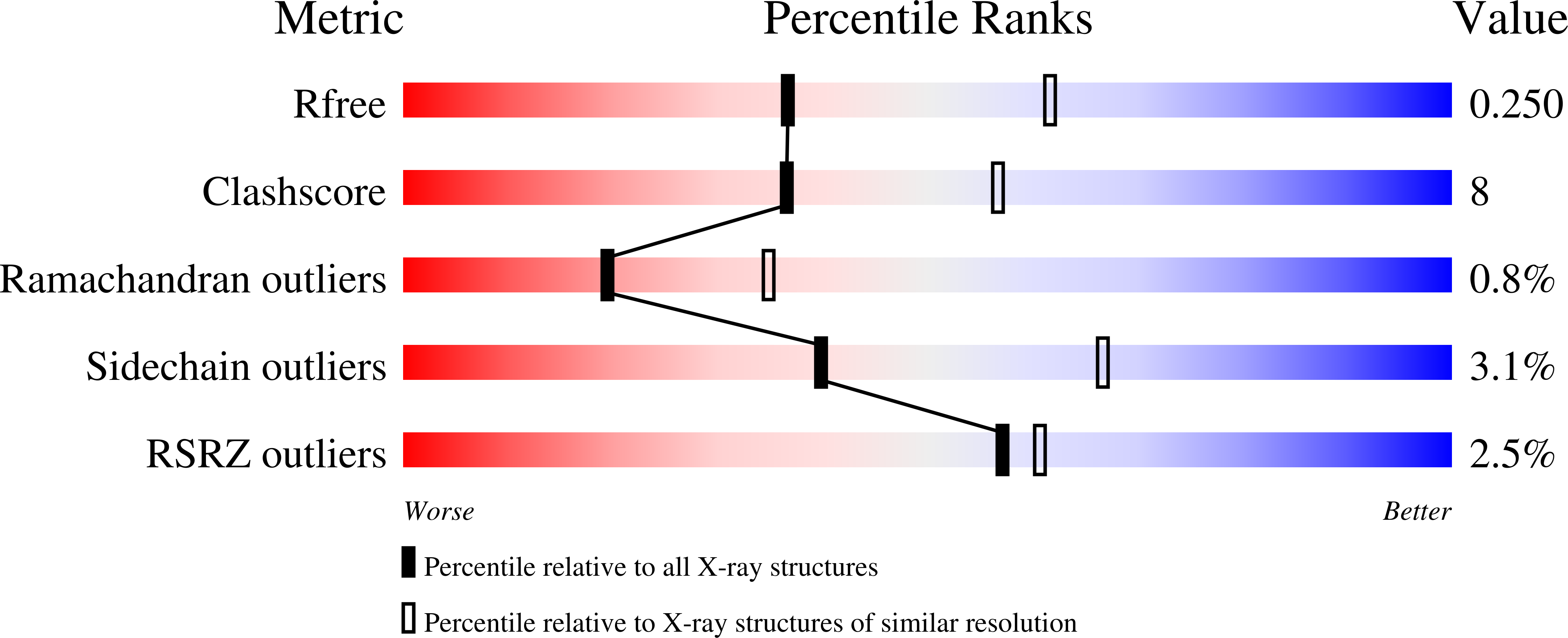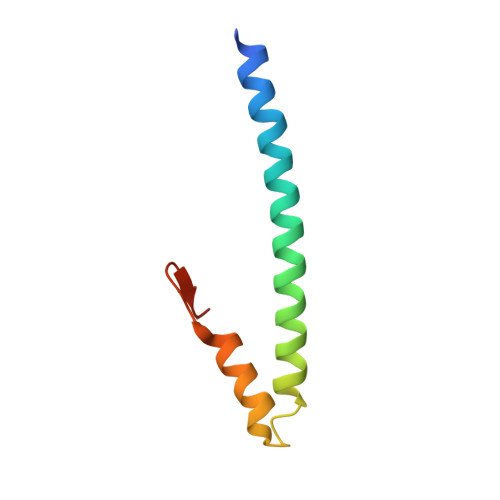An EB1-binding motif acts as a microtubule tip localization signal
Honnappa, S., Gouveia, S.M., Weisbrich, A., Damberger, F.F., Bhavesh, N.S., Jawhari, H., Grigoriev, I., van Rijssel, F.J.A., Buey, R.M., Lawera, A., Jelesarov, I., Winkler, F.K., Wuthrich, K., Akhmanova, A., Steinmetz, M.O.(2009) Cell 138: 366-376
- PubMed: 19632184
- DOI: https://doi.org/10.1016/j.cell.2009.04.065
- Primary Citation of Related Structures:
3GJO - PubMed Abstract:
Microtubules are filamentous polymers essential for cell viability. Microtubule plus-end tracking proteins (+TIPs) associate with growing microtubule plus ends and control microtubule dynamics and interactions with different cellular structures during cell division, migration, and morphogenesis. EB1 and its homologs are highly conserved proteins that play an important role in the targeting of +TIPs to microtubule ends, but the underlying molecular mechanism remains elusive. By using live cell experiments and in vitro reconstitution assays, we demonstrate that a short polypeptide motif, Ser-x-Ile-Pro (SxIP), is used by numerous +TIPs, including the tumor suppressor APC, the transmembrane protein STIM1, and the kinesin MCAK, for localization to microtubule tips in an EB1-dependent manner. Structural and biochemical data reveal the molecular basis of the EB1-SxIP interaction and explain its negative regulation by phosphorylation. Our findings establish a general "microtubule tip localization signal" (MtLS) and delineate a unifying mechanism for this subcellular protein targeting process.
Organizational Affiliation:
Biomolecular Research, Structural Biology, Paul Scherrer Institut, 5232 Villigen PSI, Switzerland.















